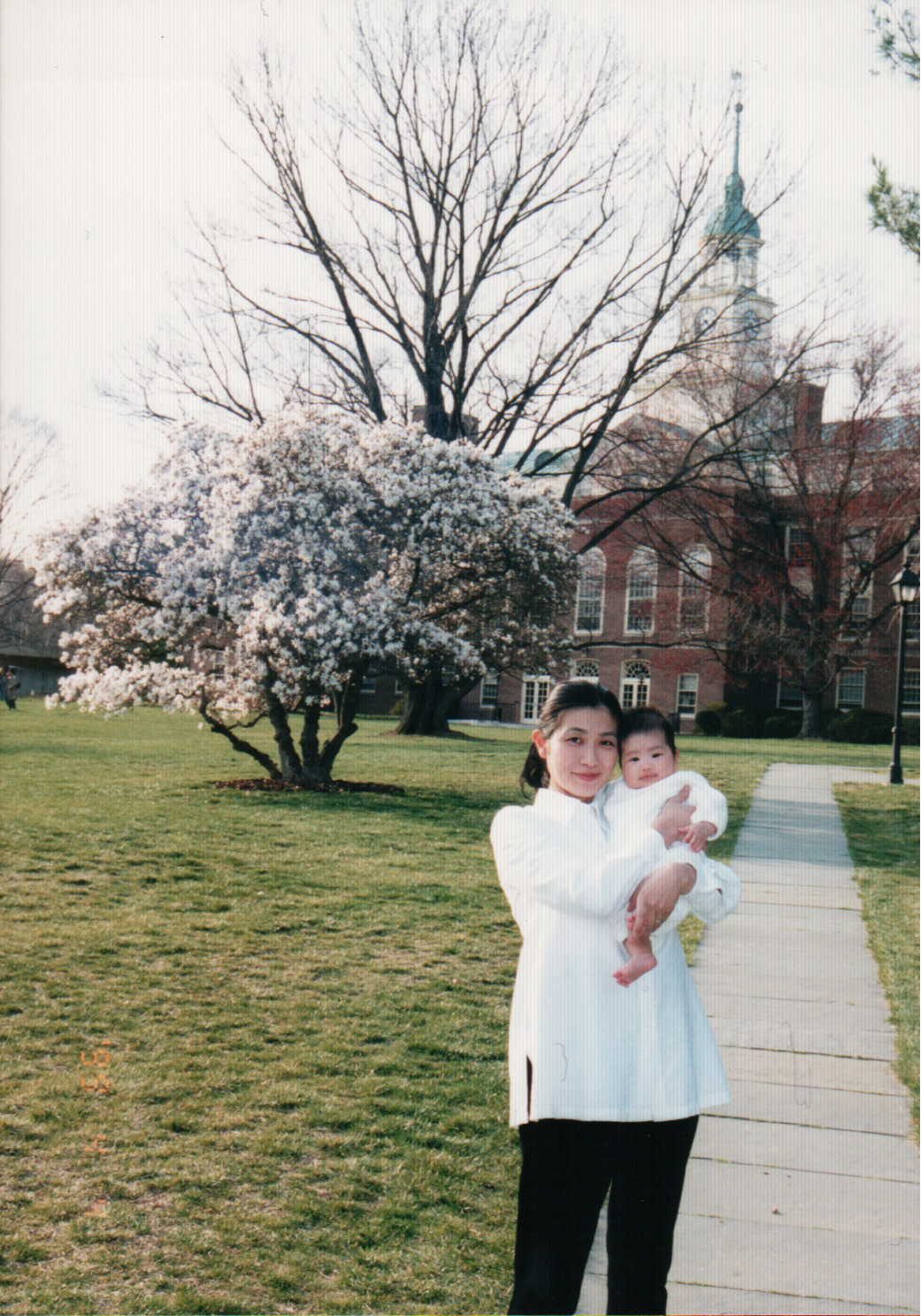Chronicles of Traveling Abroad with Children
Yukari Ito, Graduate School of Mathematics
1 2 3 4 5
3. Coming back to Japan
We moved back to Japan at the end of March; my husband headed to Kyoto, while I, along with our three-month-old daughter, settled back in Tokyo. I resumed work at Tokyo Metropolitan University in April without taking any maternity leave. Teaching evening classes could have been a challenge, but fortunately, living with my parents meant that managing my time was less of a concern. As we chose not to enroll our daughter in a nursery school, my mother was a tremendous help. I was hesitant to go on trips and leave my daughter behind, so my husband and I managed to bring her along on our trips abroad. We would either hire babysitters at our destinations or take her to lectures, listening from afar while taking turns caring for her. There was even a moment during the lecture I was delivering when my daughter, seated in the balcony (of the auditorium) with my husband, shouted “Mommy!” to cheer me on. Later on, while I was in Kyoto working as a short-term researcher at Kyoto University, my daughter started attending a local nursery. During a visit to UC Berkeley, I came across a mailing list for babysitter job postings, which enabled me to find a Japanese babysitter and a nursery willing to take children for as short as one month. This was extremely helpful. This mailing list seems to be still up and running to this day.
4. Taking my daughter on an overseas trip
The previous trips abroad I have mentioned were typically brief, lasting one to two weeks. But when a special year focusing on algebraic geometry was scheduled at the Isaac Newton Institute in Cambridge, UK, my interest was piqued, and I seized the opportunity to take my daughter with me. Inspired by a female researcher in Germany who managed with a toddler, I decided to attempt the same. My daughter, having just turned three and adapted to nursery life, was ready for the adventure. Securing a spot in a nursery in Cambridge required early application due to the long waitlist, and I managed to secure places for my daughter in two different nurseries, where she could attend a few days a week each. Our four-month stay in the UK from April to August coincided with my husband’s extended trip to Norway, and he met up with us about once a month. Life in the UK was not much different from Japan. During nursery hours, I was able to focus on my own tasks. When my daughter was ill, a junior colleague’s wife, who was there with her husband, kindly looked after her during seminars. The special year attracted a significant Japanese research community, including my graduate school juniors living in the same apartment complex, who provided my daughter with company and enjoyment beyond just what I could offer. Although she seemed to understand what the nursery teachers said, she was quiet and did not speak much. However, she found her voice through art, bringing home various pictures daily. I displayed her artwork like an exhibition on my home’s walls, which earned her praise from my juniors who visited my house, further encouraging her love for drawing. While I cannot say I was fully focused on my research, experiencing a new landscape and culture with my daughter was truly rewarding. She was well-taught in manners at the nursery, such as using a knife and fork. I appreciated the British practice of clearly defining spaces for adults and children, a refreshing change from Japan’s more inclusive approach to involving children in various spaces.
The birth of my second child



